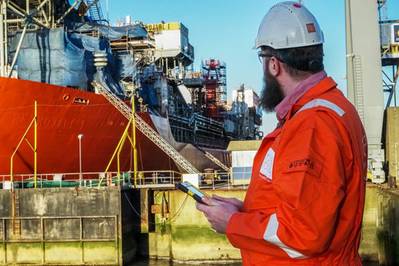Maritime PLM and PDM systems vs. PLM Pro: stating the facts
Geert Schouten, Director of Shipbuilder, discusses the challenges and solutions of maritime PDM and PLM software for large maritime projects.
Maritime PDM and PLM software are often used for large maritime projects although they are less appropriate for them. And why would you still use this software anyway when there are tools available that are much simpler, maritime-specific and prevent expensive errors at a much lower price? Geert Schouten, director of Shipbuilder: ‘I have a lot of experience with the use of maritime PLM and maritime PDM systems. I have found out why these systems can turn large projects into a challenge rather than a success.’ An explanation is required here.
Maritime PLM and Maritime PDM in the old days
Geert explains: ‘PDM stands for Product Data Management and PLM stands for Product Lifecycle Management. Both have been around for a couple of decades. In the 1990s, the need arose to manage the rapidly growing number of components of a ship in the maritime sector, and thus PDM was introduced. Because quite some changes were made during the engineering and PDM systems did not take these changes into account in the status of the construction of a ship, PLM was created as this system could be better connected to the entire life cycle.’ But what is the situation now?
Maritime PDM and Maritime PLM today: error-prone
‘Very little has changed since then,’ Schouten continues. ‘Sure, the software packages have been updated, are better organised and easier to work with and provide more options. But the architecture of the data still dates back to that time, with disastrous consequences. Let’s face it. In the maritime sector, millions often evaporate unnecessarily due to mistakes in projects. In PDM and PLM systems you are not able to connect all the necessary data.’ So, what goes wrong?
It’s still all about documents. Until today.
‘First of all, in these systems the document are still the centre of it all. Not the product and certainly not the ship. I will come back to that. This means that when a technical engineer in a maritime company searches for information, he will often end up a document as a result. He will still have to analyse this document for the information that he needs. That takes a lot of time and it is questionable whether the information is still correct, which brings us to the second point. After all, it is highly questionable whether all the information in the documents has been properly adjusted when changes were made in a project. This is because the information in PDM and PLM systems is often hidden in documents, and these are not updated automatically.’
Linking data! Which link? Everything 1 dimensional
‘Okay, I must admit it sounds a bit complex, but the current maritime PLM and PDM systems are one-dimensional. However, in daily practice it doesn’t take higher mathematics to be able to discover opportunities for improvement. Let me give you an example: John is an engineer at a shipyard. He wants to add a radar screen in his PLM system. He does it with the device code 'Navigation systems'. Makes sense, doesn’t it? Marie is a colleague of John's. She is an electrical engineer and wants to calculate how much power the ship to be built will consume. She searches for the code 'Power consumption system'. And Peter, the purchaser, wants to order all the equipment required for the bridge, and searches for the location code 'bridge'. Both Peter and Marie will not automatically find the navigation system in the system, because this data is not linked to each other. That's what I mean by one-dimensional. Now, of course Peter and Marie are smart colleagues of John's, and they know it, so they will also search with other codes. This usually works for smaller projects. But the probability of errors increases as the projects get bigger. Especially if there are changes. You can easily forget to change a document or skip a code. And the aim of the purchase of such a software package is exactly to avoid these risks, right?’
Heading for digitalization today with PLM Pro
‘Exactly, a software package should support the business process. And that can now be done so much better than with PLM and PDM systems.
True maritime digitization starts with 100 percent data-driven operational management, which means that you manage all maritime project data in a data management system. All information can be found in the system, down to the smallest detail. For example, you can see which components and activities are applicable per room, per activity or per system. The content of documents in PLM and PDM systems is therefore digitized. Such a PLM Pro system contains all data. And, more important than that: A PLM Pro system automatically links all related data. And for this, a maritime knowledge base is used. This provides great opportunities to create new, much better processes. When you search for information, you no longer need to struggle through a bunch of documents. You will immediately find what you are looking for, and Peter and Marie would also immediately find the correct information. The system understands that a navigation screen also has a location and power consumption.
Our Shipbuilder Software is such a great PLM Pro system. In such a system, the multi-dimensional structure of a ship is leading. You can easily navigate through projects because the menus are based on the ship's configuration. For example, think about a digital twin.
Also, with the launch of PLM and PDM systems, working methods had to be thrown overboard to start working smarter. In the end they have helped the maritime sector to improve projects. However, the time has come for intelligent and truly data-driven working.
A new innovative step with PLM Pro, such as Shipbuilder Software: www.shipbuilder.nl




